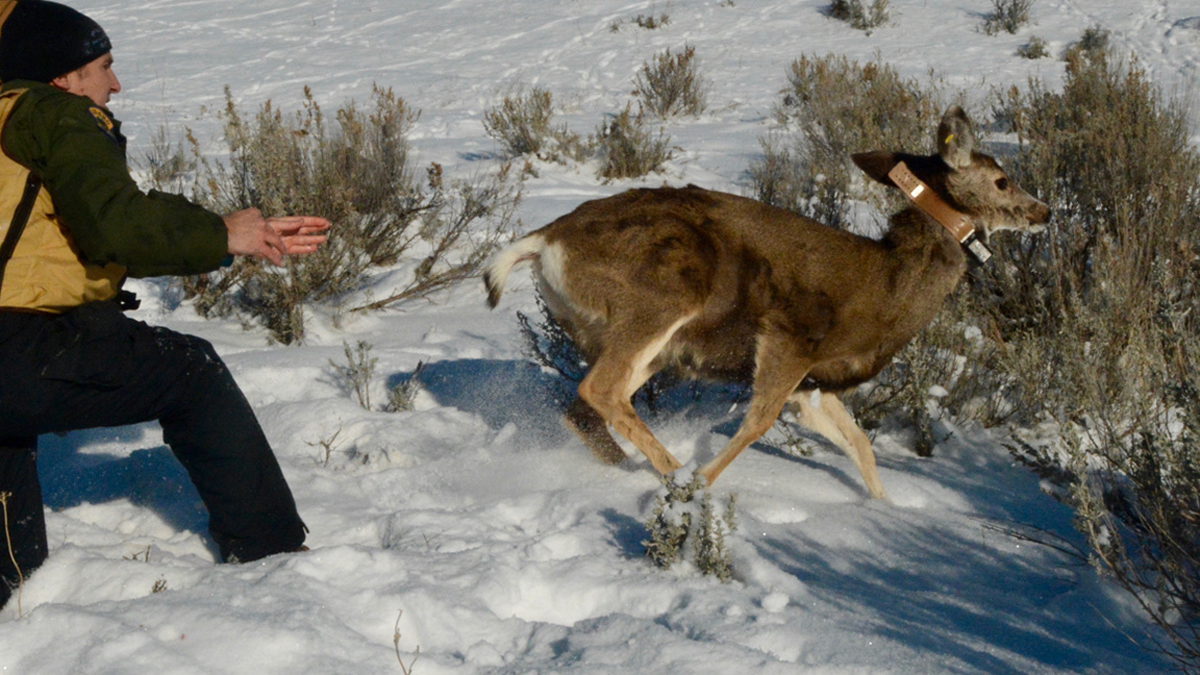Below is a news release from the Idaho Department of Fish and Game.
Idaho big game hunters pursue deer and elk in the fall, and by winter most have put their guns and bows away for the season, and that’s when Fish and Game biologists start their annual hunt.
But instead of getting meat for the freezer and antlers to put above the mantle, biologists capture deer and elk in December and January and fit them with collars so they can track how many animals survive winter and into spring. It’s critical data that helps biologists ensure there’s healthy, sustainable big game populations for the future.
Winter watch
During winter, a small army of Fish and Game crews and volunteers disperse throughout the state to capture deer and elk by using drive nets, net guns, and other methods to capture animals, measure and weigh fawns and calves, and do biological testing, then fit them with electronic tracking collars.
They start winter with about 225 fawns and 225 calves collared, and also collar enough adult deer and elk to offset the number that died the previous year. Because fawns and calves are growing, collars are designed to fall off in about six months, while collars adults can remain for years.
Biologists need to know how many young animals survive their first winter, which is important data because the young animals’ chances of long-term survival increases significantly after their first winter.
The data allows wildlife managers to monitor herds in real time and react if something happens, such as an extremely harsh weather. So far this winter, that doesn’t appear to the case. Biologists around the state are seeing relatively mild winter conditions, which bodes well for wildlife, but many weeks of winter remain.
Fish and Game started intensively using tracking collars on mule deer in 1998 as a cornerstone of its management. Biologists are currently tracking about 225 fawns across 21 hunting units in central, southern and eastern Idaho, as well as adult deer. They’re also tracking 234 elk calves in 20 hunting units throughout the state.
Elk are hardy, but data is still needed
In 2015, Fish and Game started collaring elk in parts of Idaho that represent different habitat types. Elk are less prone to winter kill than deer, but biologists still needs to know how they’re faring through winter, and whether herds are growing or shrinking.
Knowing how many survive, and why some died, helps biologists understand what’s driving or limiting herds in the different parts of the state.
Using data from collars also allows big game managers to identify and respond quickly to population changes. In the past, aerial surveys where biologists fly over winter range and count animals was the department’s main tool for surveying herd sizes and seeing population trends. In recent years, they’ve also incorporated game cameras into big game surveys.
Those surveys remain an important tool for managers, but they are typically done every three to five years, depending on the hunting units. Capturing and collaring animals allows Fish and Game to annually monitor many of those same herds on a more regular basis.
“The real strength in using this type of data is to improve our ability to predict deer and elk population sizes between aerial surveys,” Fish and Game’s Deer/Elk Coordinator Rick Ward said. “Monitoring collared animals lets us do that quicker and more consistently than in the past, which allows us to be more responsive to changes.”
(Photo credit: Roger Phillips/Idaho Fish and Game)
